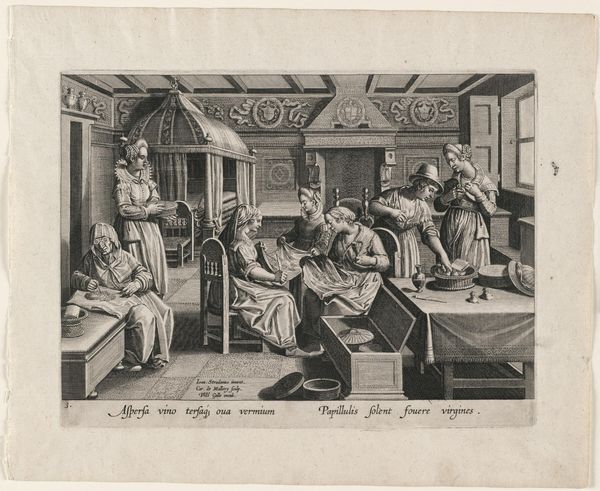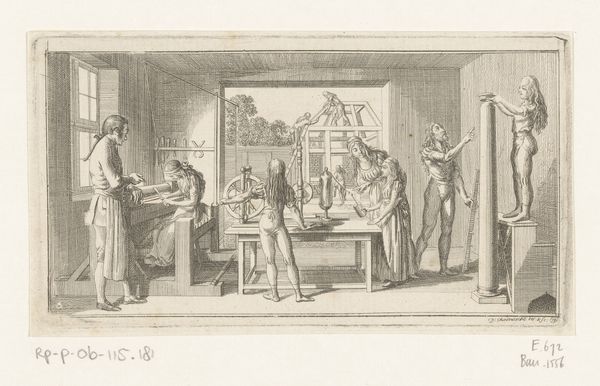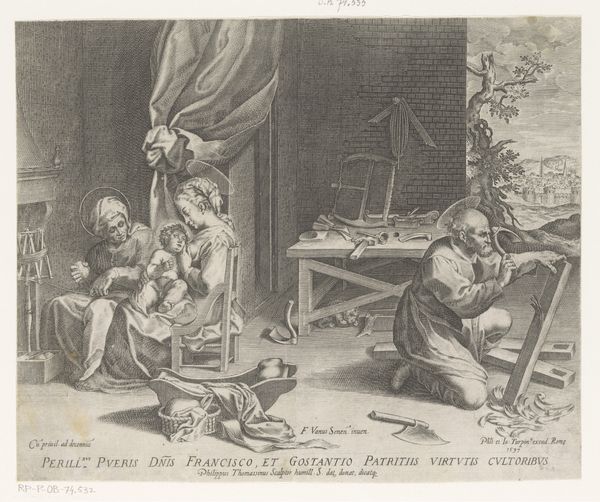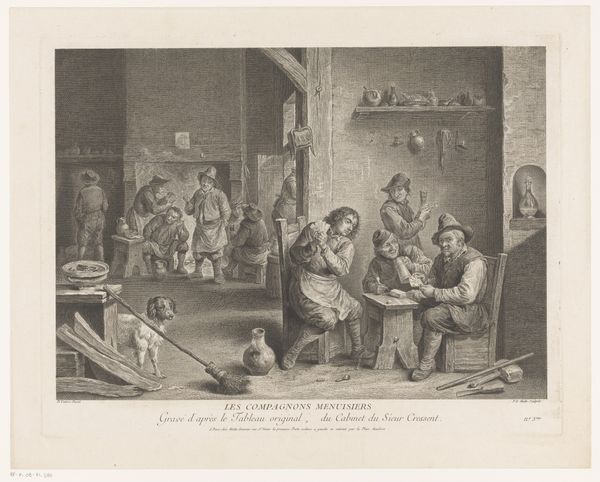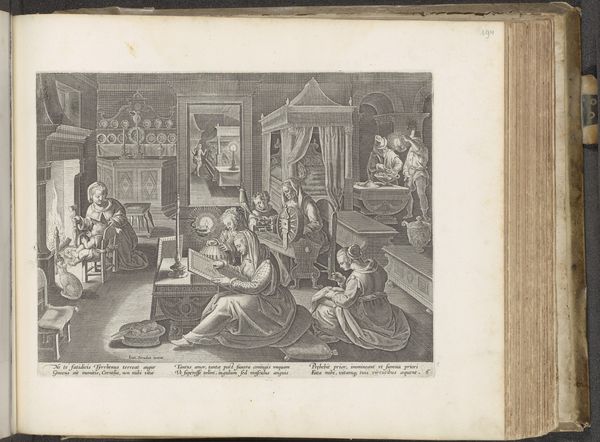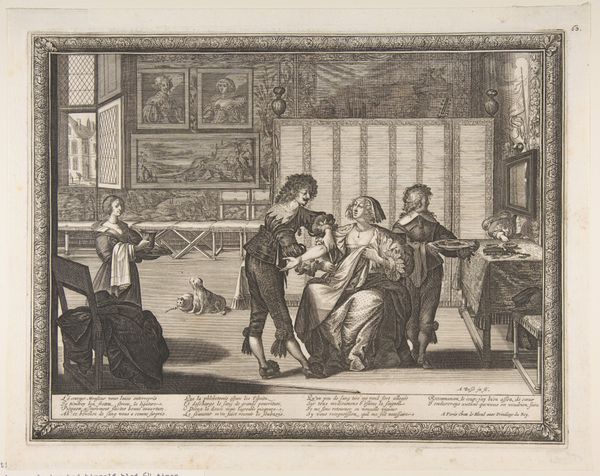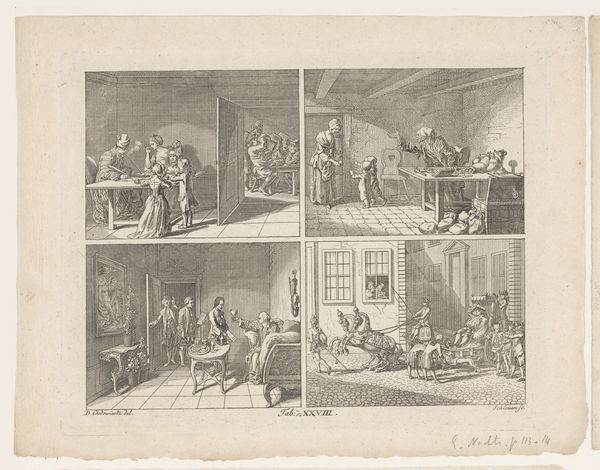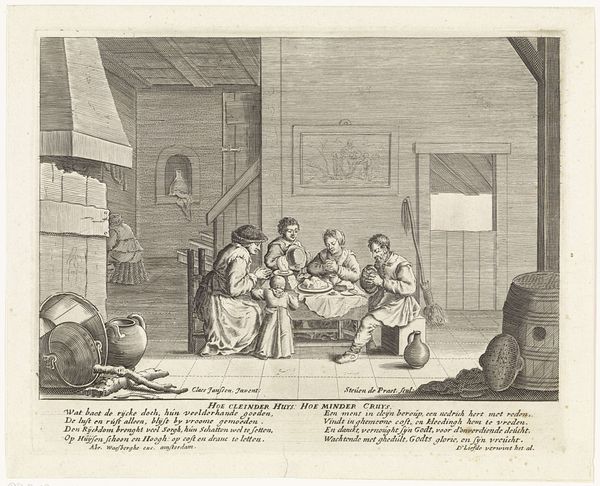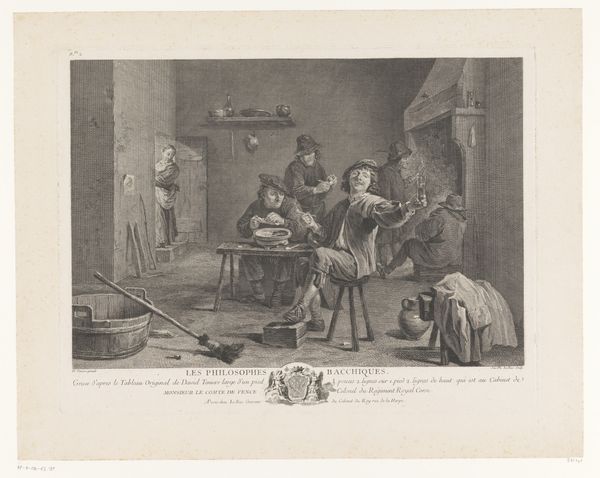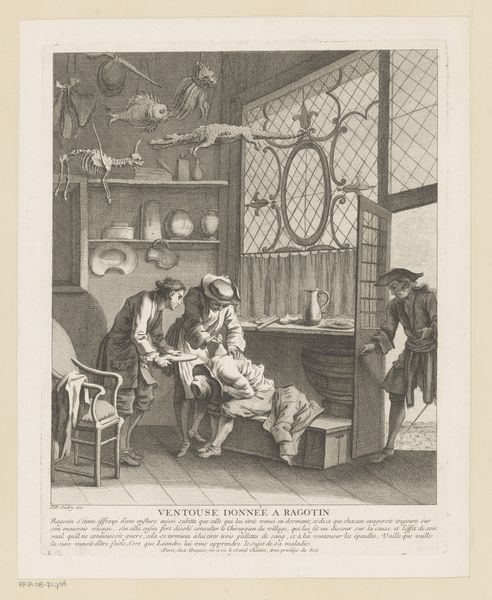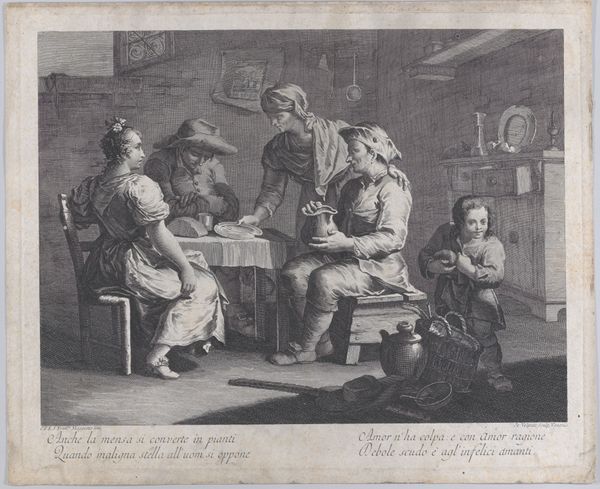
print, engraving
#
allegory
#
baroque
# print
#
genre-painting
#
history-painting
#
engraving
Dimensions: 69 mm (height) x 91 mm (width) (plademaal)
Editor: Here we have Jonas Haas's "Vignet," an engraving from 1755. My first impression is the sheer density of lines and the contrast. I’m immediately drawn to the cherubs, of course, but the tight cross-hatching is really quite fascinating. What aspects of this piece stand out to you? Curator: The systematic arrangement of form, particularly the contrast between the organic cherubic forms and the rigorous lines defining the architecture and books, interests me greatly. Observe the strict geometry of the background bookshelves; their function is to frame, and by extension, elevate the central activity. The textural variations—achieved solely through the manipulation of line—create a captivating surface tension. How does this structured tension shape your perception of the engraving's meaning? Editor: Well, the composition does feel like a stage set. Like, even though it's just a vignette, it is presenting…what? Is it the transmission of knowledge with these children playing? Curator: Consider the deliberate juxtaposition of playful figures against the backdrop of scholarly pursuit. This interplay, meticulously rendered through line and form, creates a complex semiotic relationship. How might one interpret this deliberate formal contrast as a commentary on the relationship between innocence, learning, and societal structures? Notice how one cherub presents a page with some writing while others play? Editor: It seems a commentary on how youthful minds receive and disseminate the knowledge that surrounds them. The style and form emphasizes their role in that practice, how seriously or not they take it. The formal constraint highlights the spontaneity of the cherubs’ movements in the space. Thanks, that’s a fresh perspective! Curator: Indeed. The strictness of the engraving amplifies their freedom, just as limitations highlight possibilities in any art form. The contrast becomes the engine for conveying this complex idea.
Comments
No comments
Be the first to comment and join the conversation on the ultimate creative platform.

